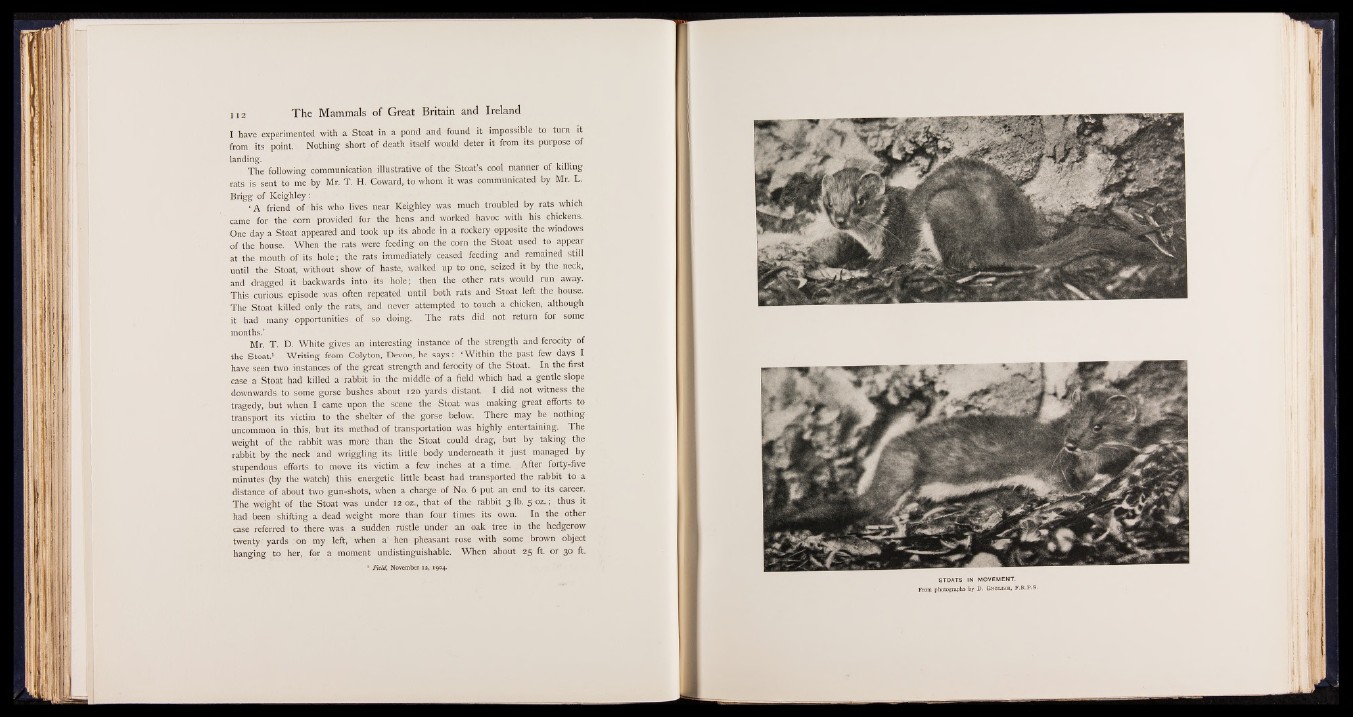
I have experimented with a Stoat in a pond and found it impossible to turn it
from its point. Nothing short of death itself would deter it from its purpose of
landing. . .
The following communication illustrative of the Stoat’s cool manner of killing
rats is sent to me by Mr. T. H. Coward, to whom it was communicated by Mr. L.
Brigg of Keighley:
‘ A friend of his who lives near Keighley was much troubled by rats which
came for the corn provided for the hens and worked havoc with his chickens.
One day a Stoat appeared and took up its abode in a rockery opposite the windows
of the house. When the rats were feeding on the corn the Stoat used to appear
at the mouth of its hole; the rats immediately ceased feeding and remained still
until the Stoat, without show of haste, walked up to one, seized it by the neck,
and dragged it backwards into its hole; then the other rats, would run away.
This curious episode was often repeated until both rats and Stoat left the house.
The Stoat killed only the rats, and never attempted to touch a chicken, although
it had many opportunities of so doing. The rats did not return for some
months.’
Mr. T. D. White gives an interesting instance of the strength and ferocity of
the Stoat.1 Writing from Colyton, Devon, he say s : ‘ Within the past few days I
have seen two instances of the great strength and ferocity of the Stoat. In the first
case a Stoat had killed a rabbit in the middle of a field which had a gentle slope
downwards to some gorse bushes about 120 yards distant. I did not witness the
tragedy, but when I came upon the scene the Stoat was making great efforts to
transport its victim to the shelter of the gorse below. There may be nothing
uncommon in this, but its method of transportation was highly entertaining. The
weight of the rabbit was more than the Stoat could drag, but by taking the
rabbit by the neck and wriggling. its little body underneath it just managed by
stupendous efforts to move its victim a few inches at a time. After forty-five
minutes (by the watch) this energetic little beast had transported the rabbit to a
distance of about two gun-shots, when a charge of No. 6 put an end to its career.
The weight of the Stoat was under 12 oz., that of the rabbit 3 lb. 5 oz.; thus it
had been shifting a dead weight more than four times its own. In the other
case referred to there was a sudden rustle under an oak tree in the hedgerow
twenty yards ! on my left, when a hen pheasant rose with some brown object
hanging to her, for a moment undistinguishable. When about 25 ft. or 30 ft.
1 Field, November 12, 1904.
STOATS IN MOVEMENT.
From photographs by D. English. F.R.P.S.